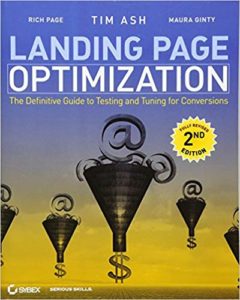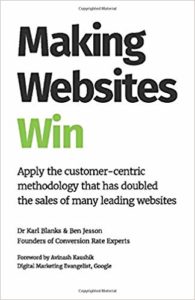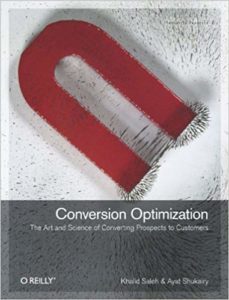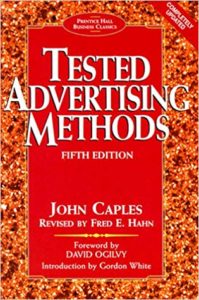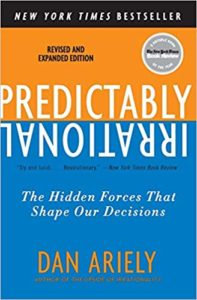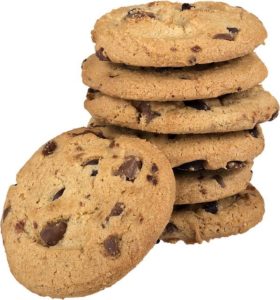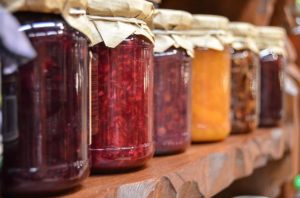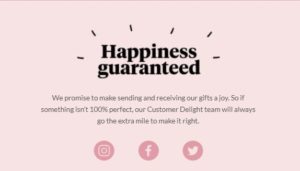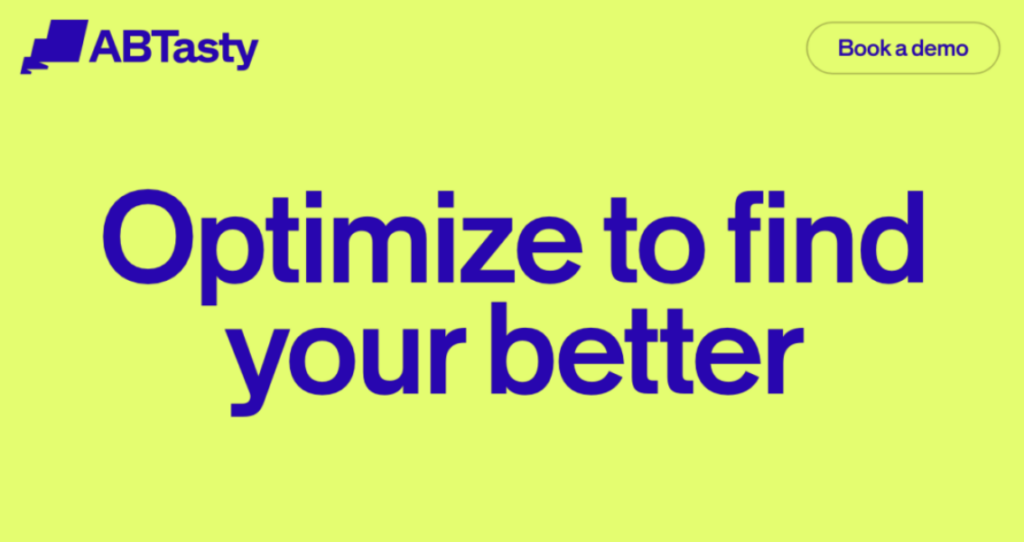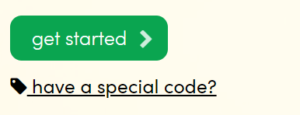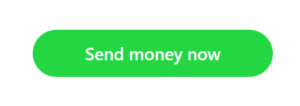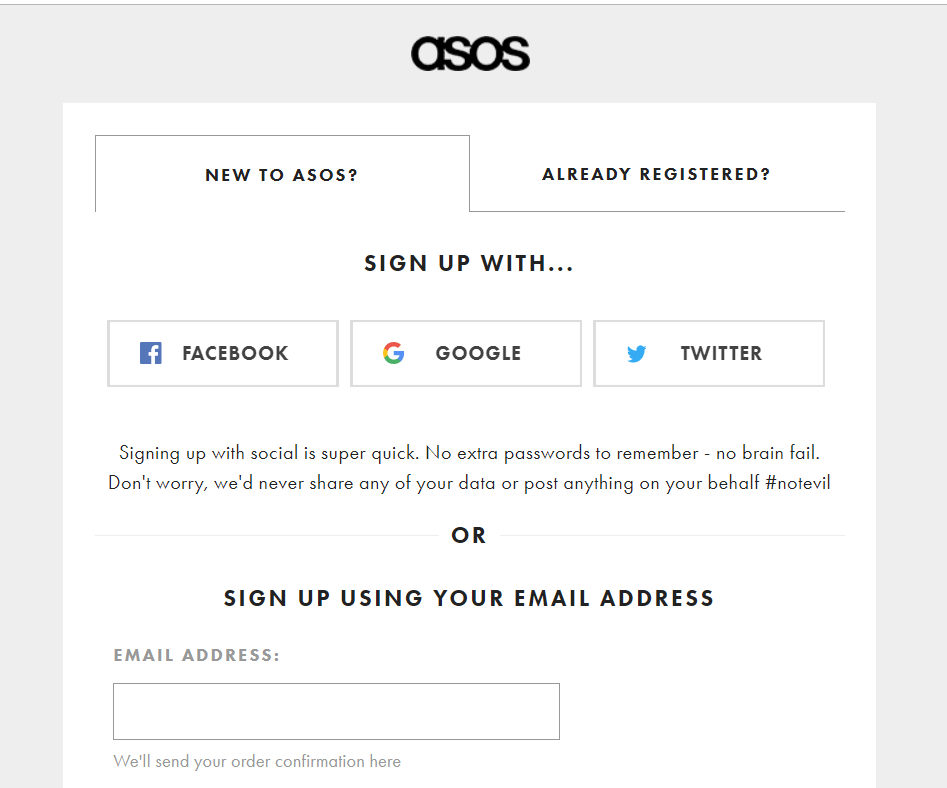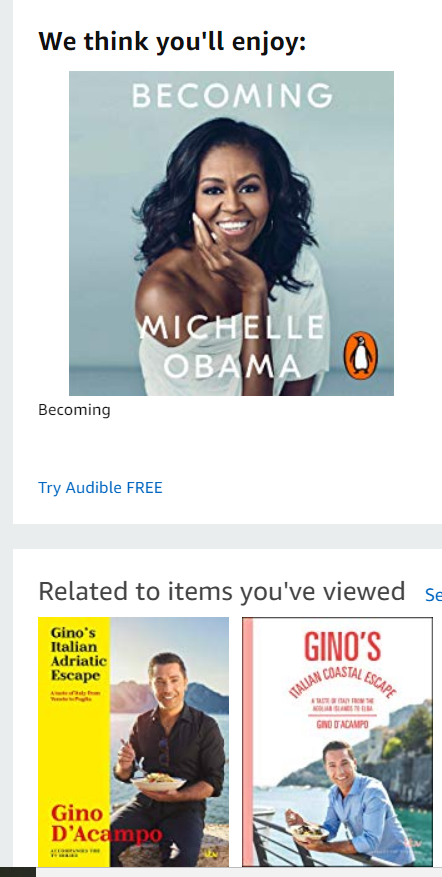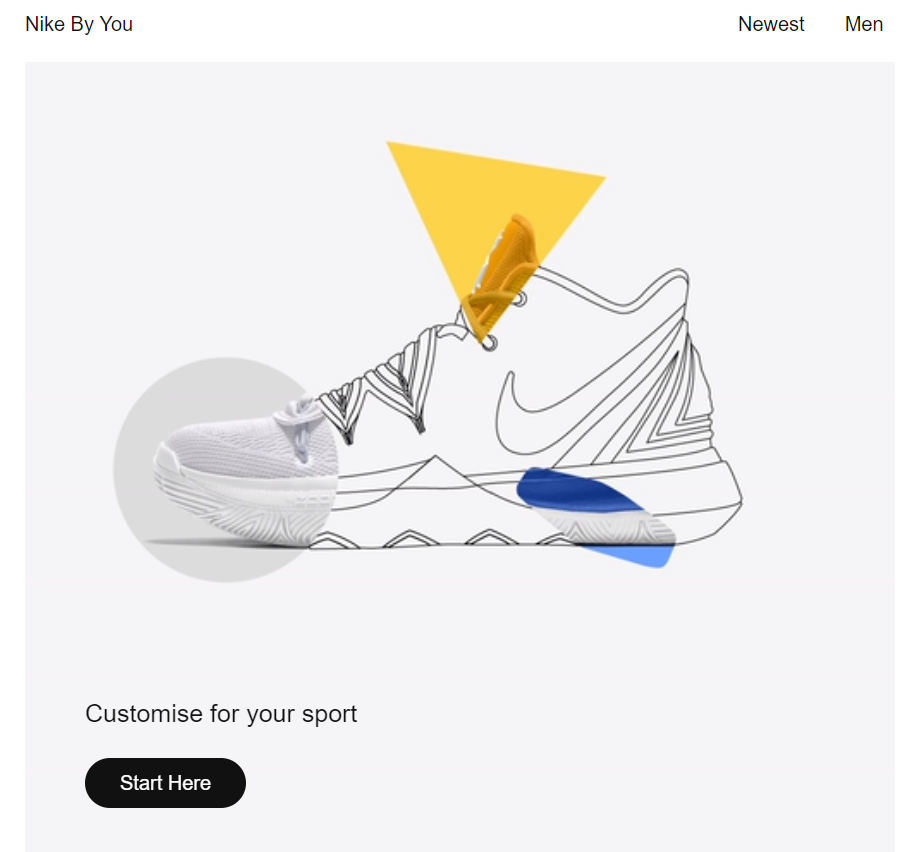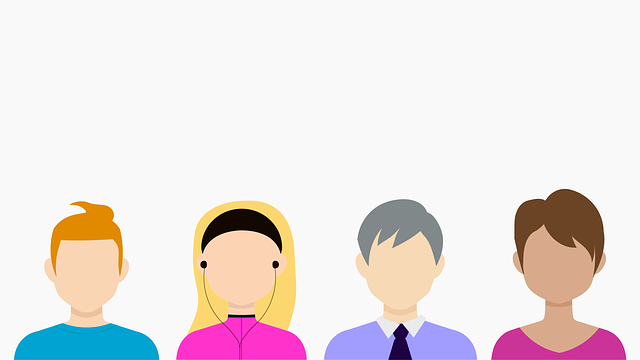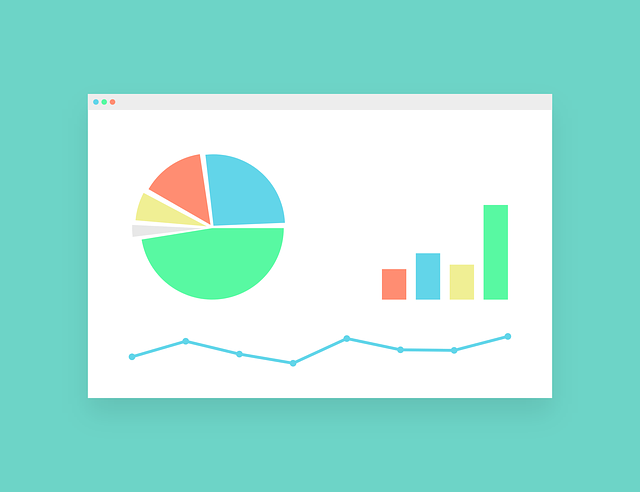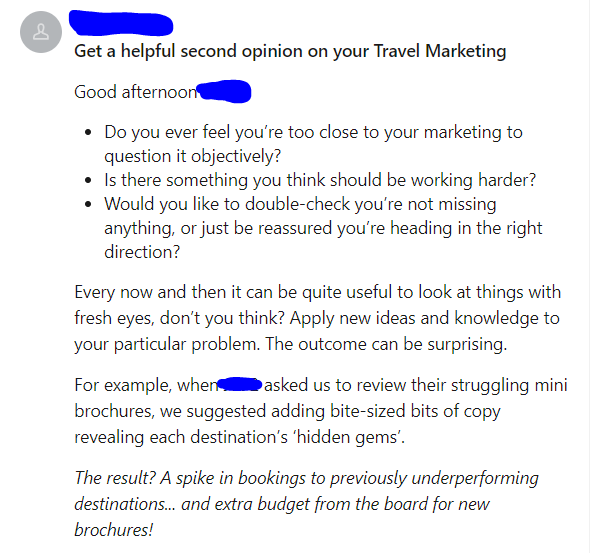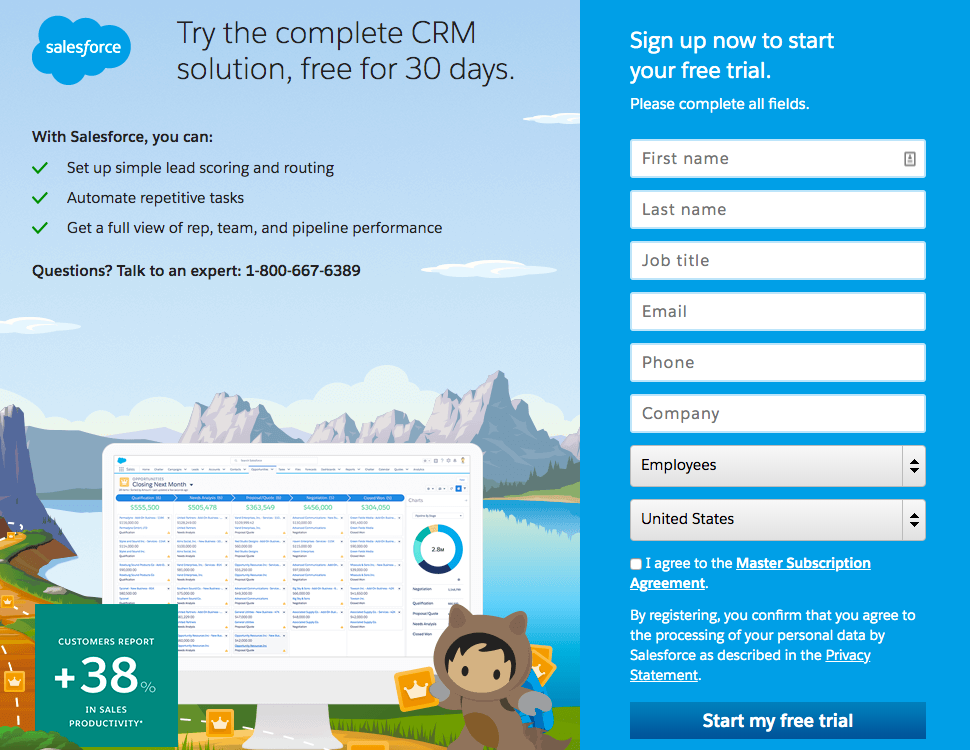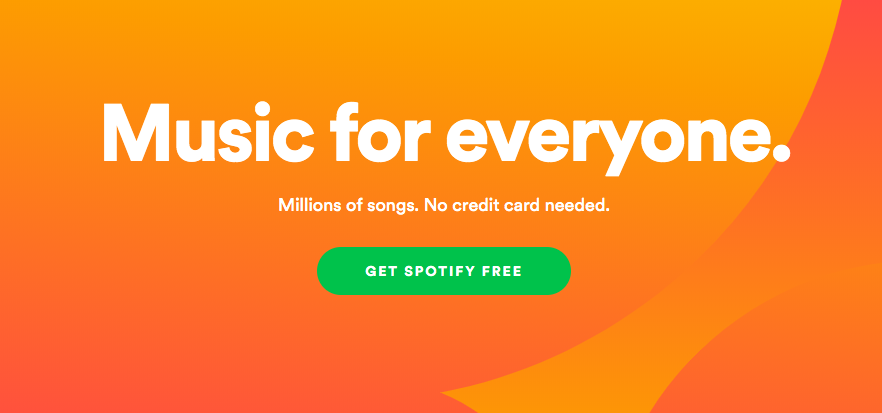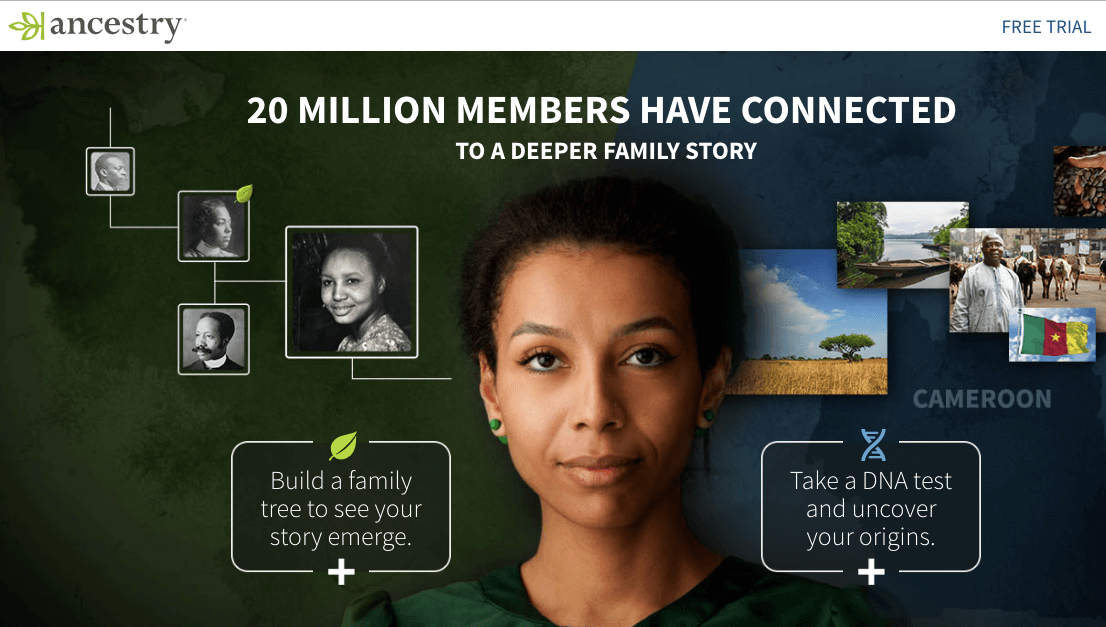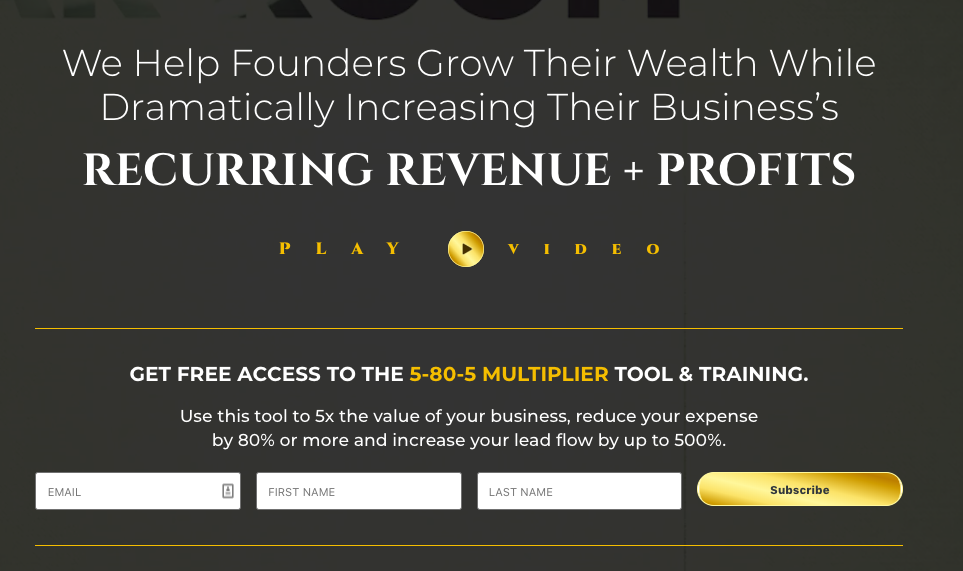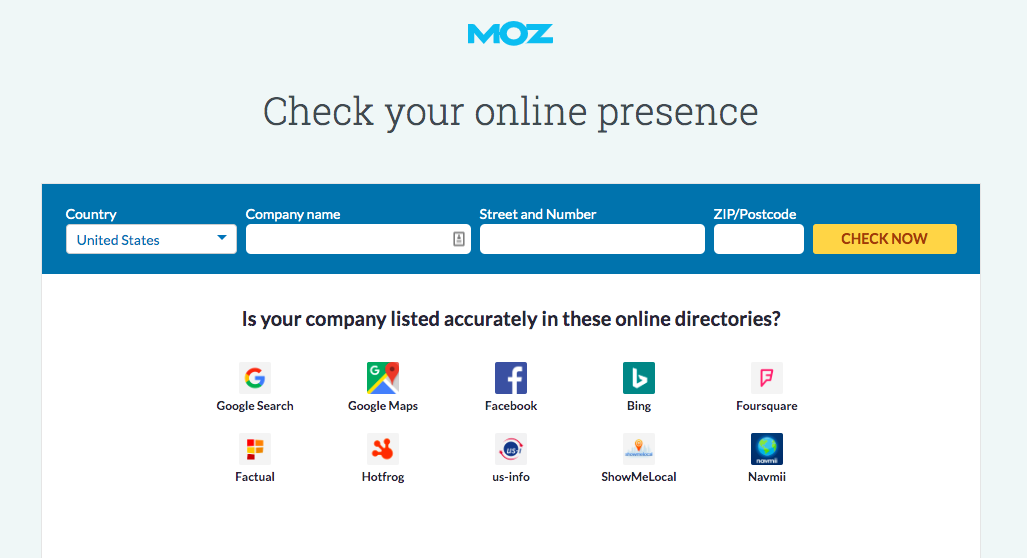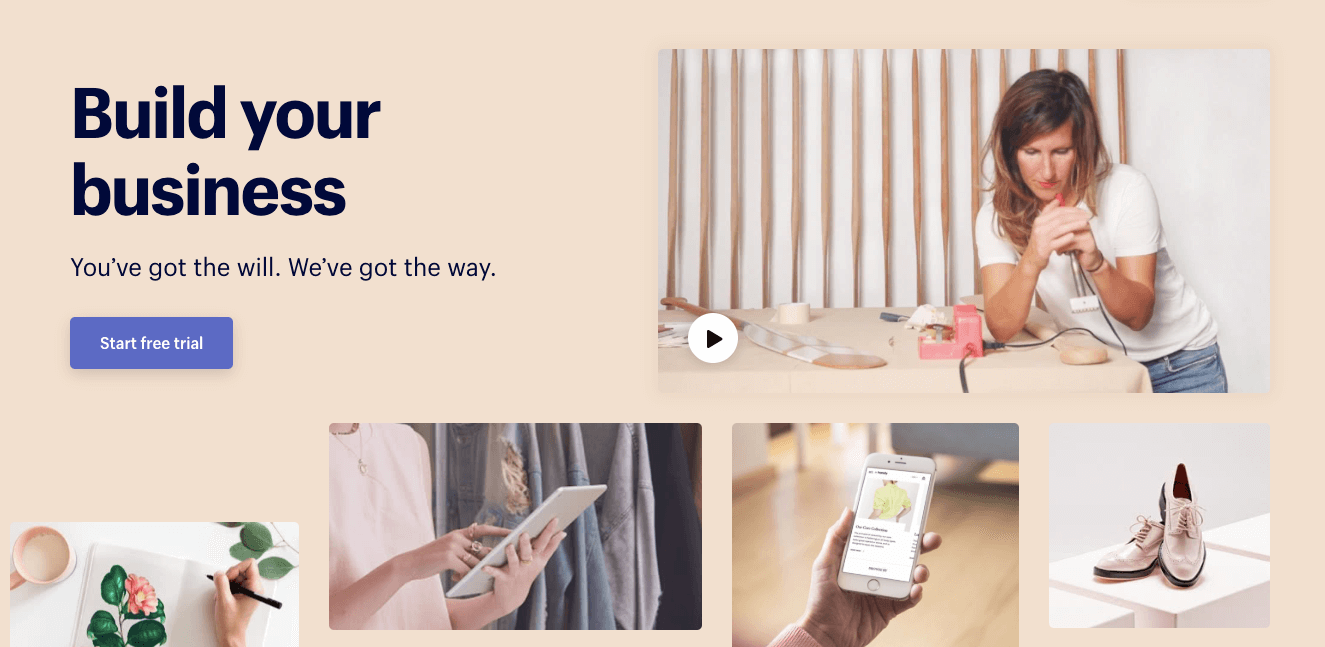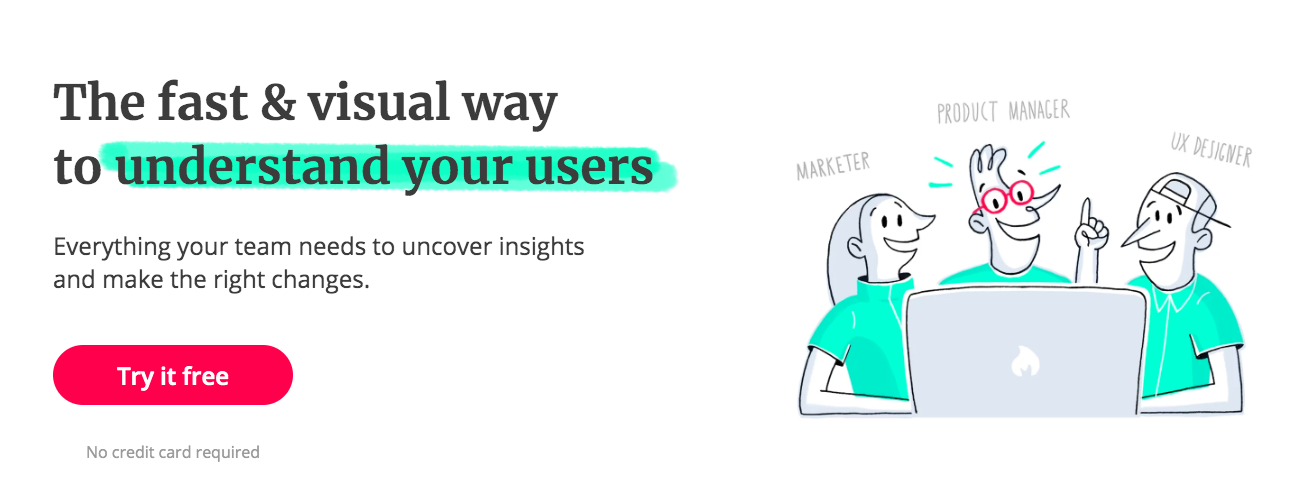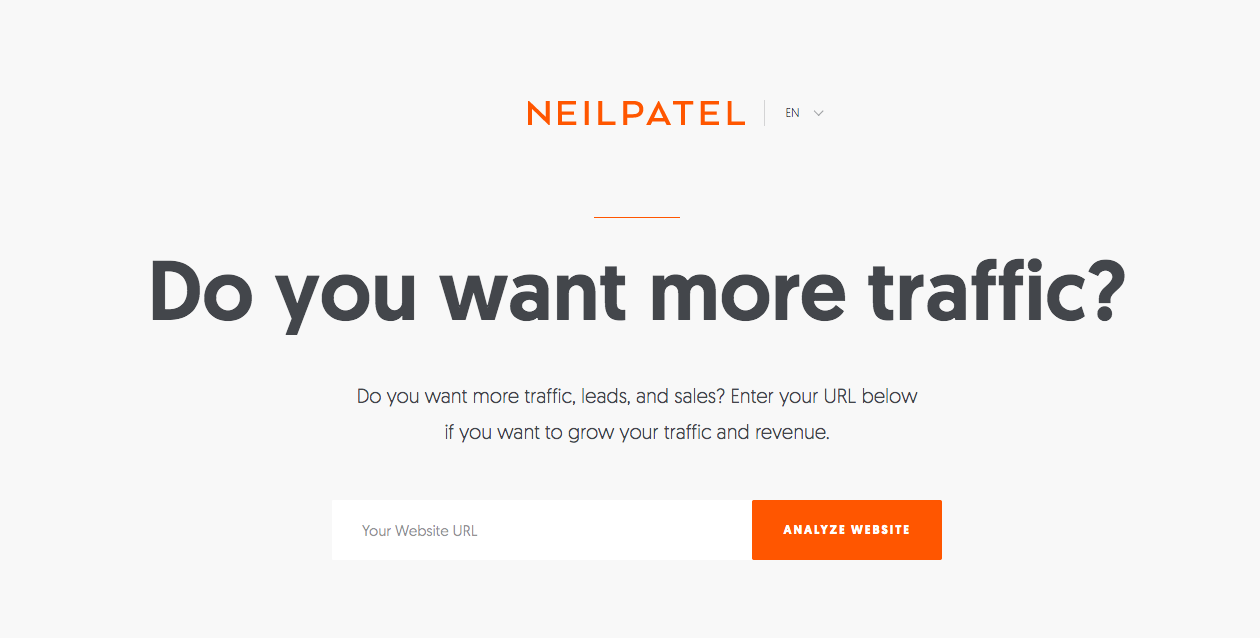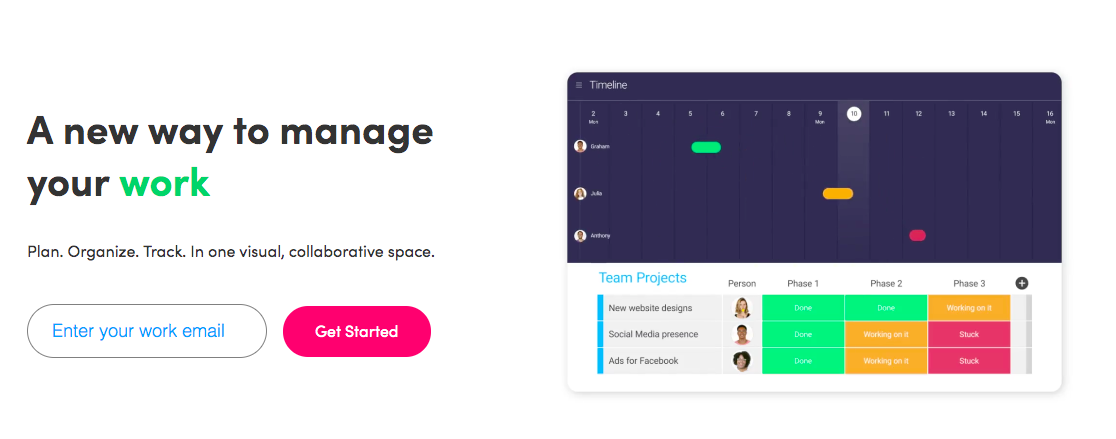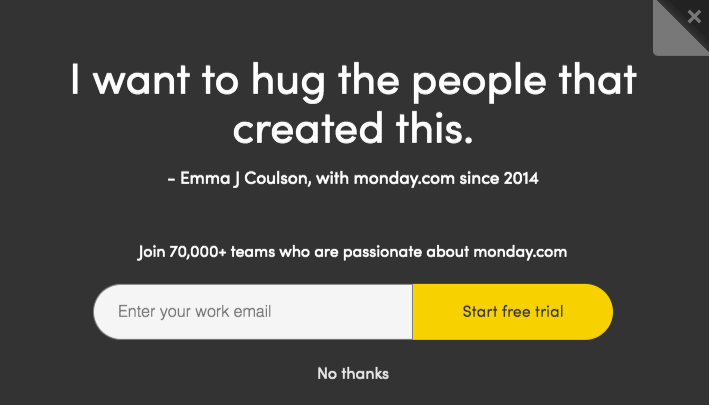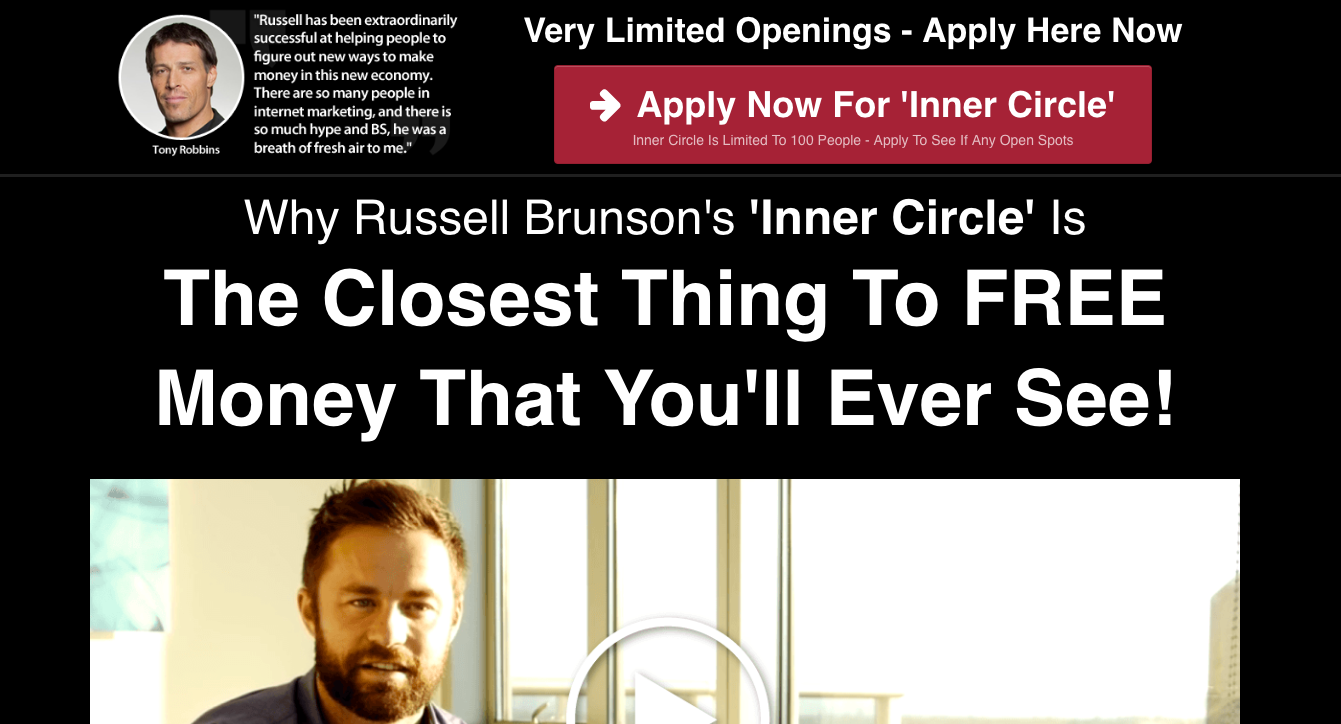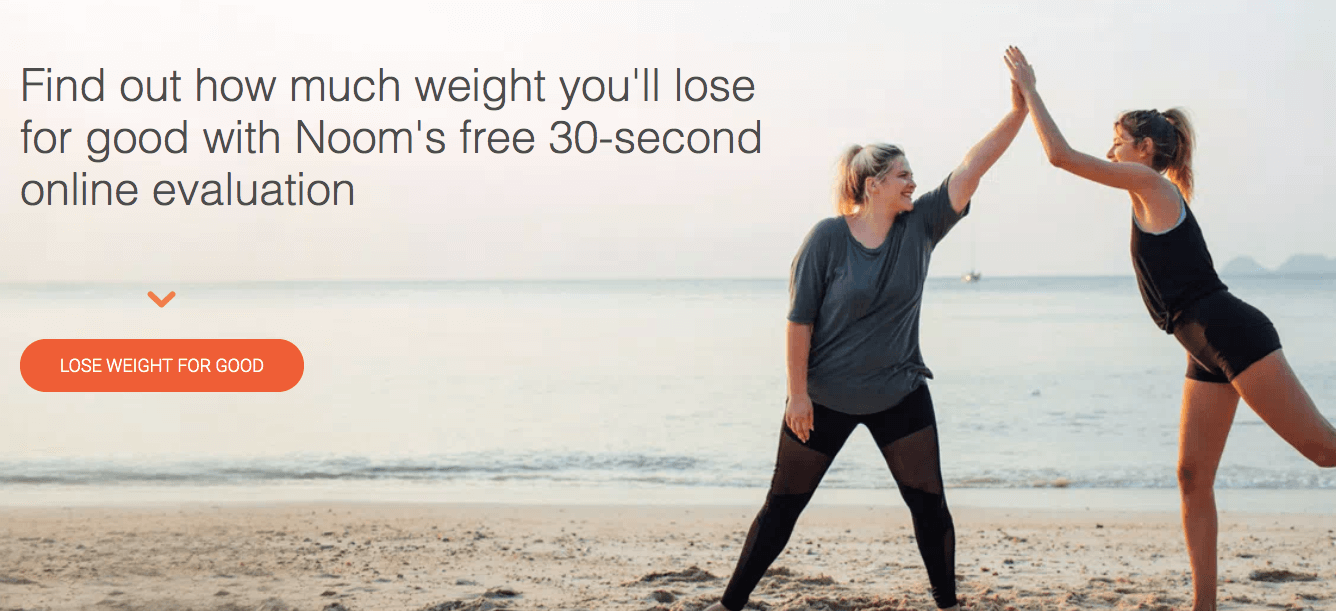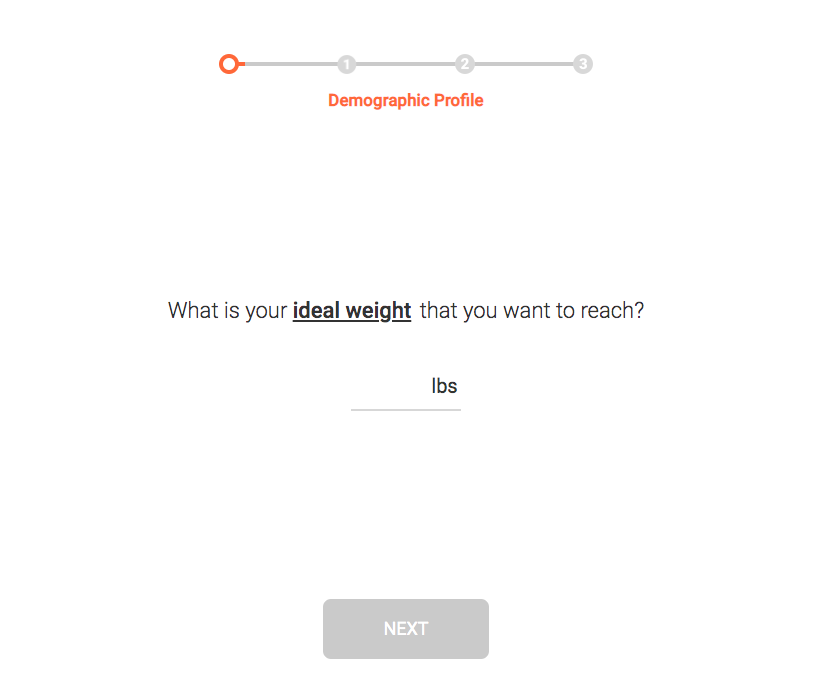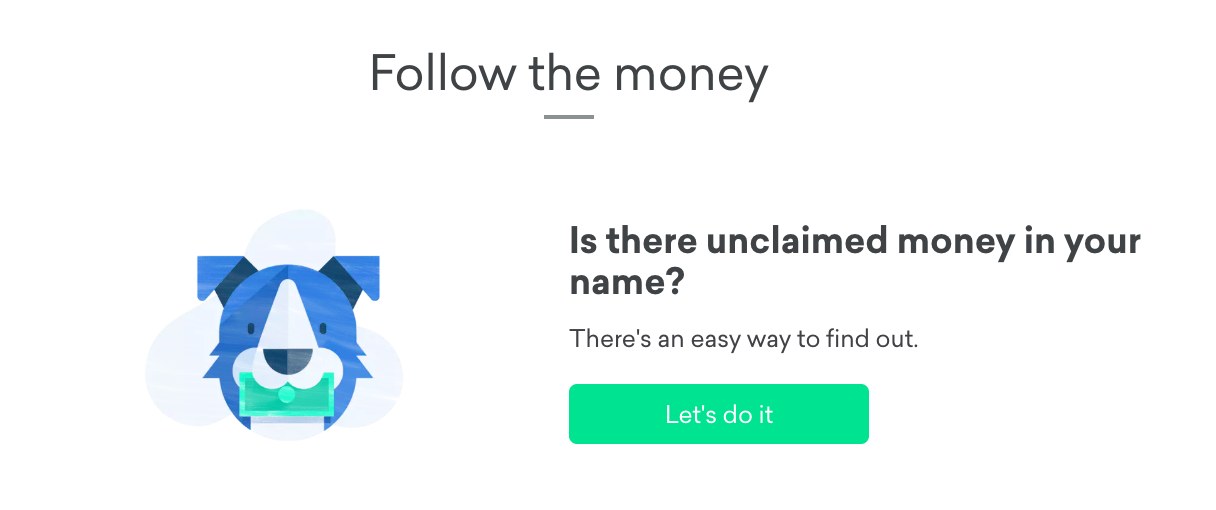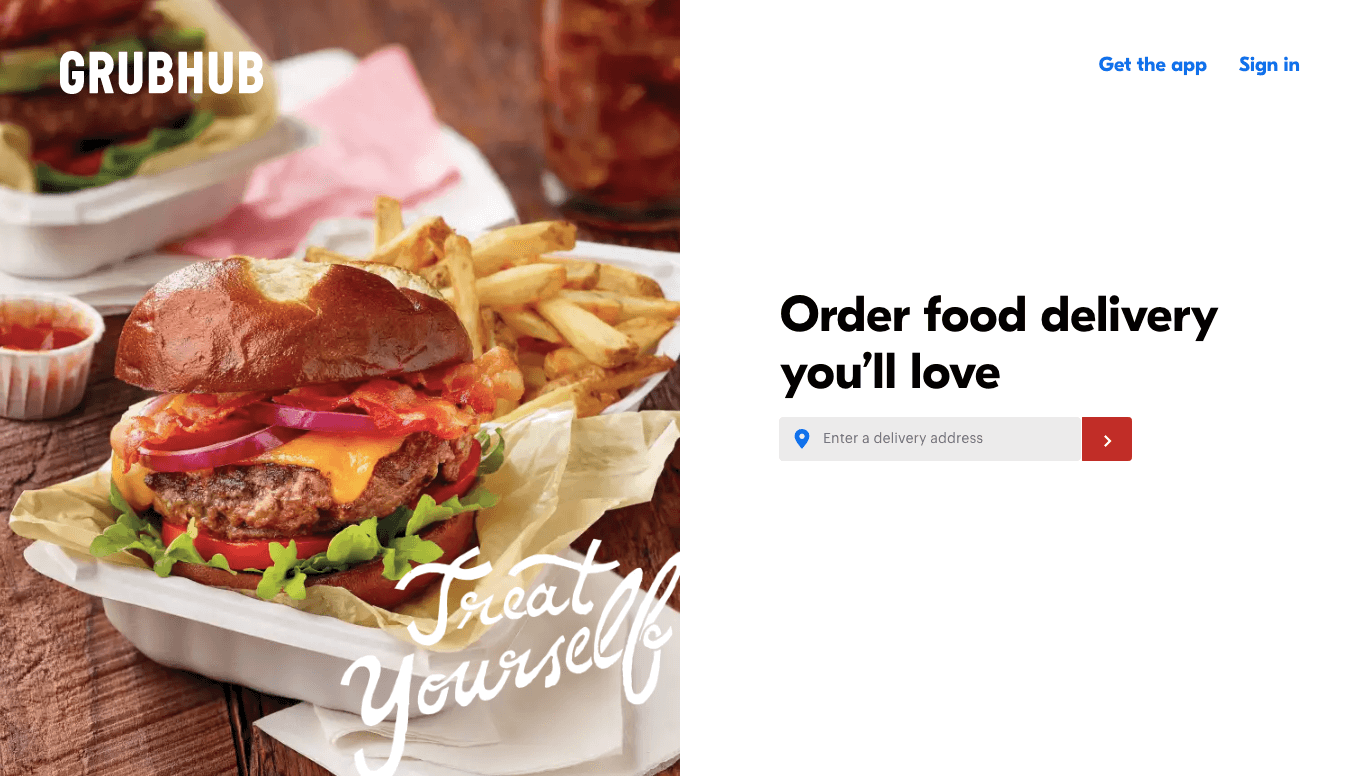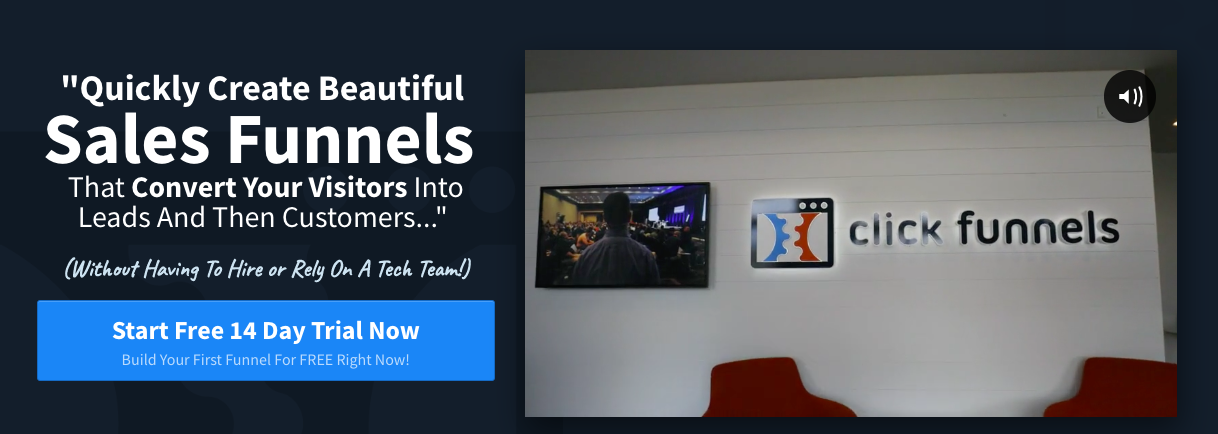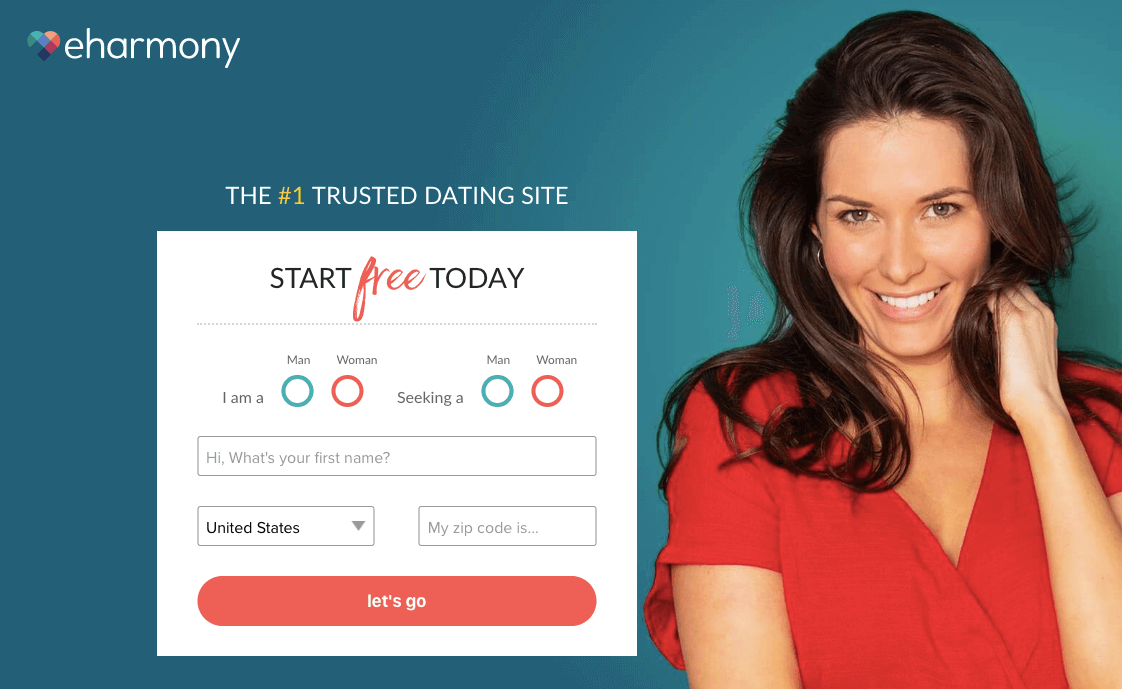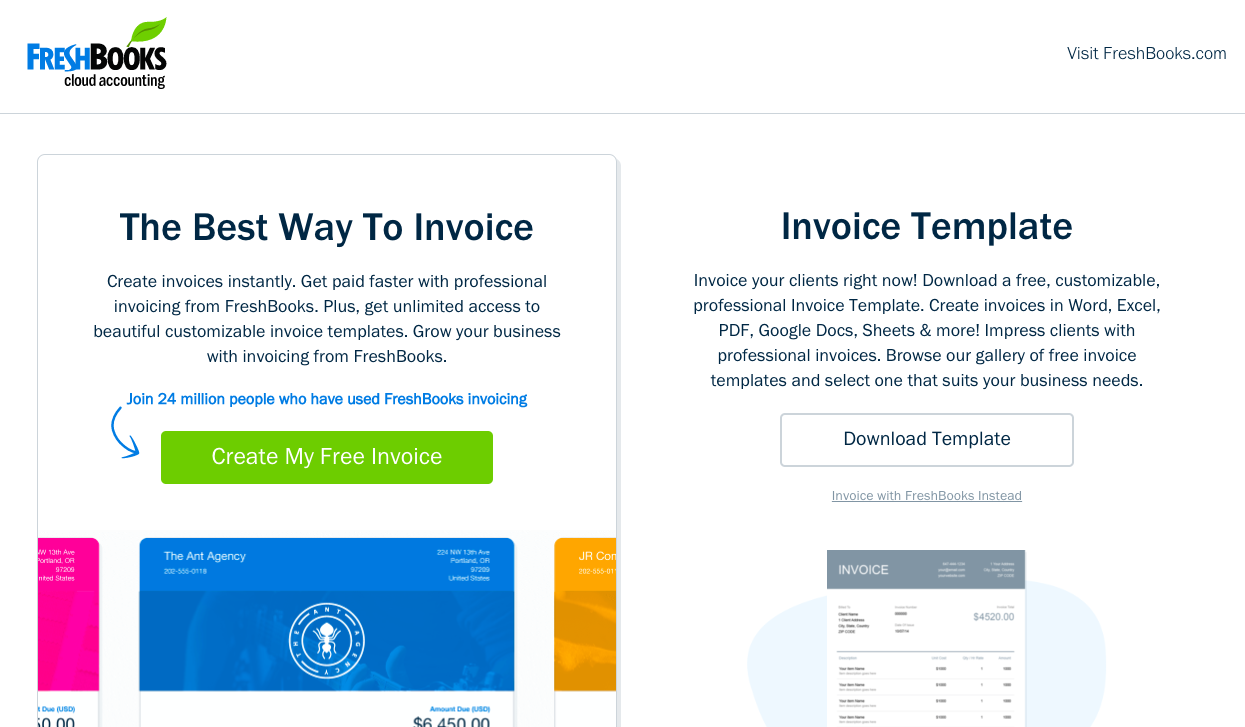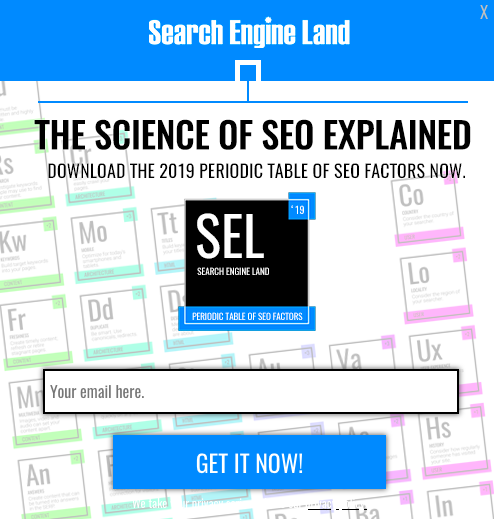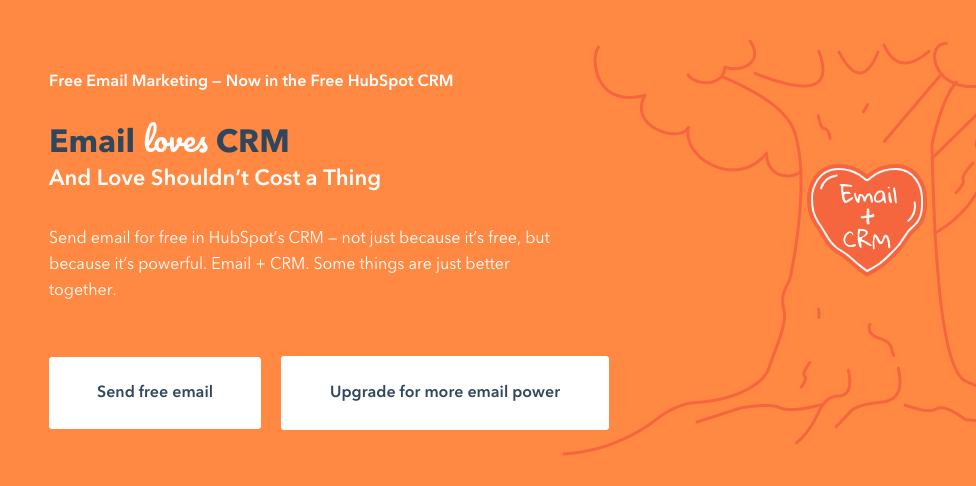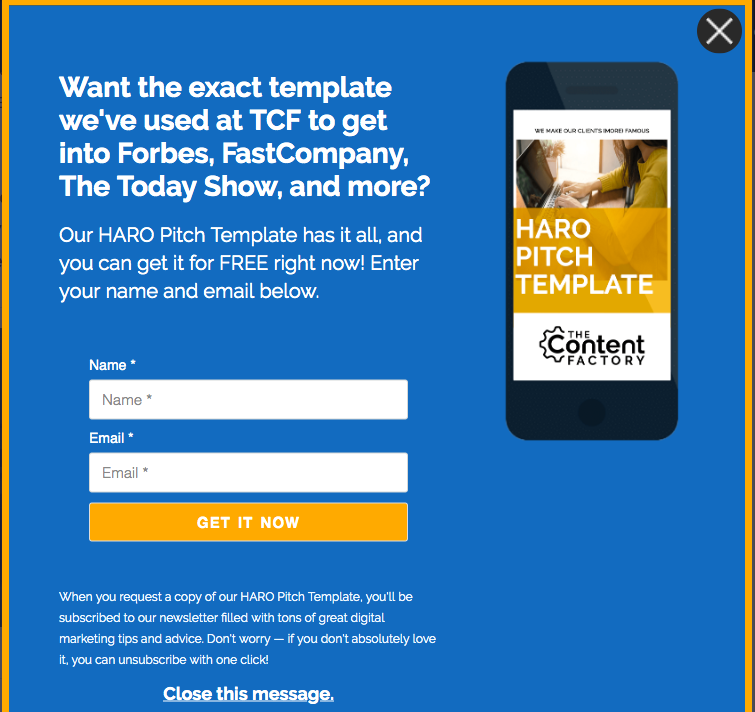Facebook’s Ads Manager is a marketing powerhouse. Even with a $5 daily budget, you could reach hundreds of thousands of people in your target audience. A report by Buffer estimated that as many as 91% of marketers use Facebook ads. Facebook marketing continues to push full steam ahead.
Although Facebook ads can be great for drumming up brand awareness, knowing how to A/B test your ads is the secret to long term success. Without it, you’re just guessing at what works instead of rigorously analyzing and improving your approach. Consistent A/B testing (also known as split testing) provides the analytics you need to improve your strategy, boost engagement, and increase your click-through rate.
Read on for a step-by-step guide on how to A/B test your Facebook ads. By the end, you’ll know how to set up your own A/B ads on Facebook, and the best presets to choose for each option along the way.
But First, What is an A/B Test?
A/B testing your Facebook ads can teach you more about your audience’s preferences.
A and B refer to the versions of the ad. Your A version acts as the control. It’s the ad version you’ve seen work in the past or believe will work best. Your B ad version implements a variable. It’s a variation of A and is meant to compete with your A version.
If A beats out B, then you keep running the A ad and make a different change to B to try again.
Once the B version performs better than A, B becomes your new control – your new A. Your original A is discarded or archived. The new A now acts as the baseline to beat when you split test again in the future.
Split testing is meant to help identify which variables pull the most weight and altering the parts that don’t support conversions.
Before you begin A/B testing, be sure you’re following best practices to creating a Facebook Ad that converts.
First, Decide What You Want Your Ad to Accomplish
Before you begin split testing, be sure you’re clear on what specific goal you have for that ad. Usually, you’ll be looking for post engagement, such as a click-through to the website or increasing sign-ups.
Don’t forget to check that the click-through destination matches the promise of the ad. If you were offering a discount on a pair of sneakers, make sure that’s precisely where your audience ends up.
Three Options to Get Started in Facebook’s Ad Manager
Facebook gives you three options to create a split test.
Guided creation: Facebook will walk you through the process of creating a split test. Once you complete their questions, your ads will be ready to go. This method works best if you’re new at Facebook advertising or prefer a step-by-step guide. The screenshots below show walkthrough this method.
Quick creation: Facebook lets you design the structure for a split test. This structure can be saved and deployed at a later time. This can be helpful if you know what you plan to test, but your campaign doesn’t start for another week.
Duplication: If you’ve run Facebook Ads before, the Duplication method allows you to add a new ad set or alter an existing campaign for your split test. We’d recommend this if you want to test one variable in an ad you’ve already run.
There’s no wrong choice since it’ll depend on your preference and history of running Facebook ads. For more detailed steps on each option, review their Help page here.
Select Your Ad’s Objective & Variable

Select the objective that you decided on earlier. Once you choose one of these options, a menu will appear. Select “Create Split Test”, then select the variable you plan to change. The dropdown menu options are creative, delivery optimization, audience, and placement.
- Creative: Design changes such as video, image, description, etc.
- Delivery Optimization: Delivers ads to the Audience that is most likely to do your desired action (landing page views, link clicks, impressions, daily unique reach).
- Audience: Change the target audience for the ad.
- Placement: Changing which platforms your ad appears.
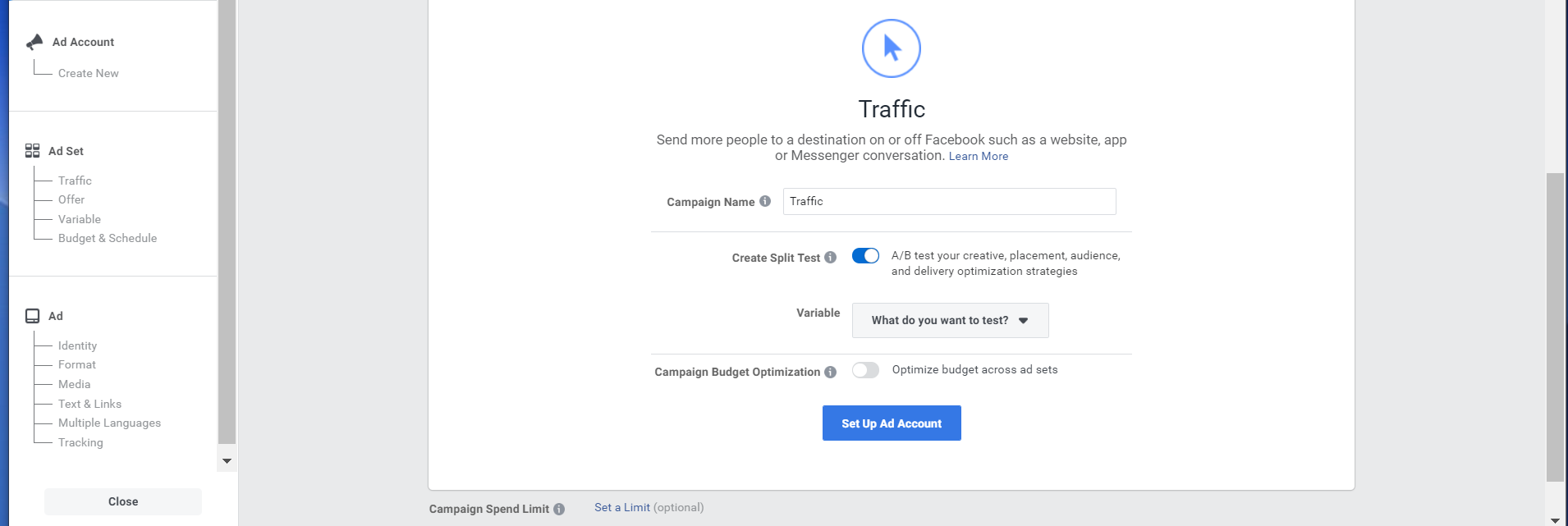
Once you choose that, Facebook will walk you through the next several decisions you need to make. This includes deciding where you want to drive traffic, creating an offer, choosing an audience, optimize for ad delivery, and setting a budget. Here are menu screenshots of each. As you can see, there’s a high-level of customizability available for each ad set you run.
Variable

Although you selected this already, you have the option to change it again here. In Facebook’s Ads Manager, you’re only allowed to select one variable at a time. Like we recommended earlier, this is the best way to know which variables caused which change.
Audience & Placements
The next two sections are audience and placement. These will both depend on your specific brand and location, so you’ll need to navigate this on your own. Audience can be narrowed down by location, sex, age, and even by past engagement with your page. Consider your target audience’s personality, including their hobbies, interests, and lifestyle. Once you determine a target audience, you can save that cohort and alter it in the future.
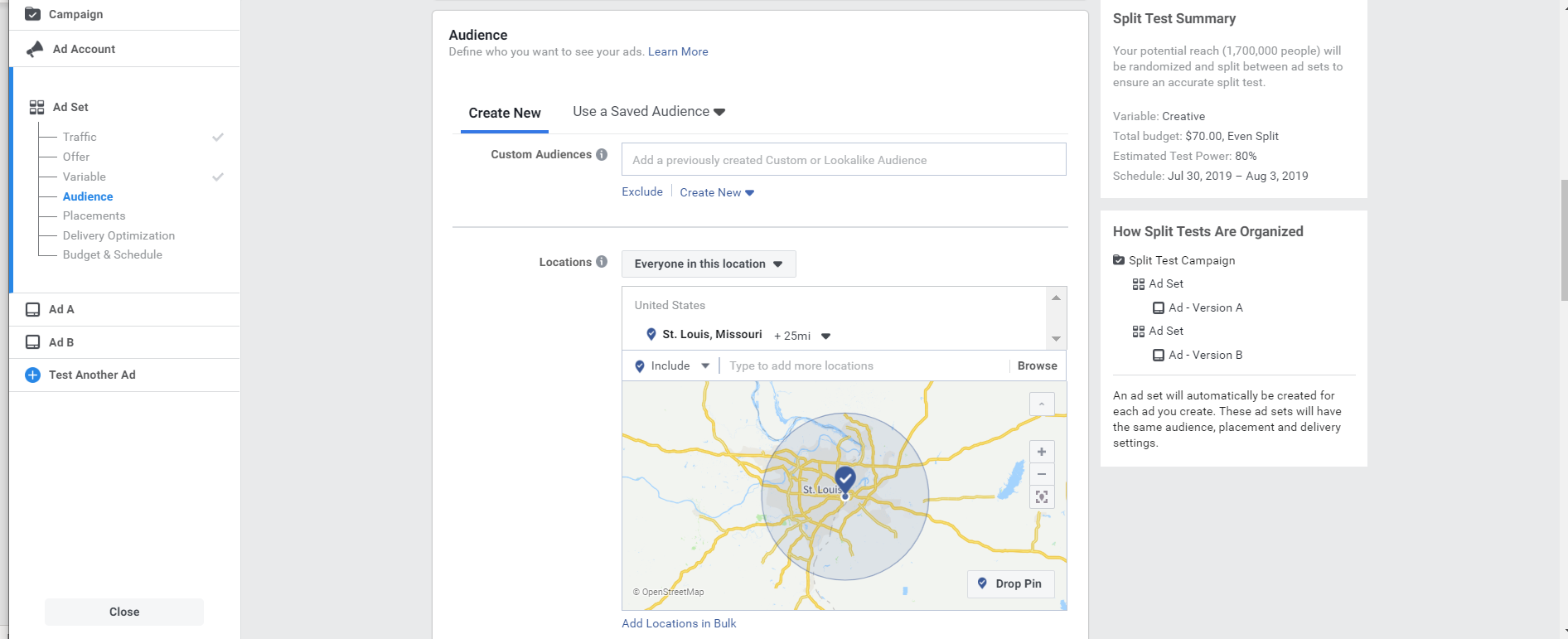
Because Facebook placements cover such a broad range of formats and platforms (think everything from Instagram stories to Messenger Inbox), it’s probably best to leave it on recommended. Facebook’s Ads Manager uses its database of ad analytics to determine the best combination of placements for your ad. As you continue to analyze your results, you can create custom placements in the future.
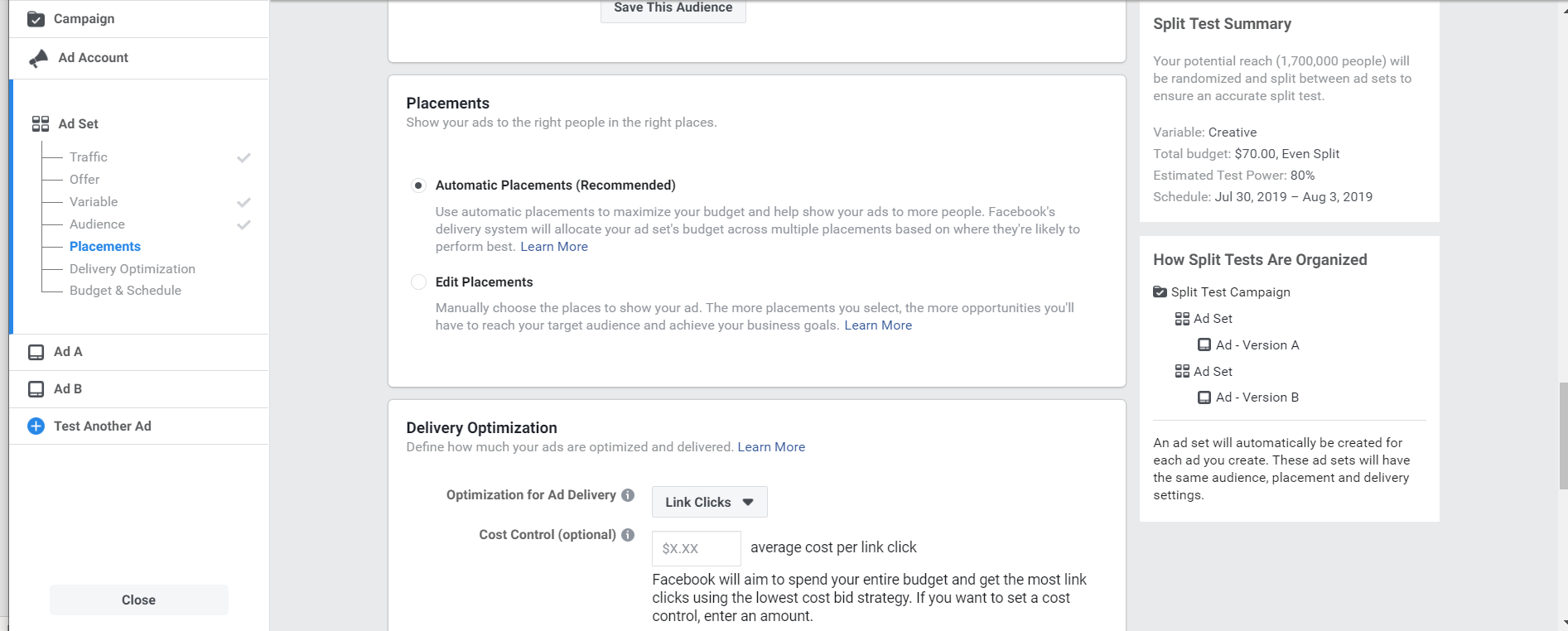
Delivery Optimization
In this section, you can optimize your ad delivery for specific conversions such as link clicks, landing page views, impressions, and daily unique reach. This should reflect the original goal you set out for your ad. You also have a choice between getting charged per impression, or per click.
For ad scheduling, we recommend narrowing your time to when your audience is most likely to be interested in your ad, or at the very least awake. For example, if you’ve seen that your ads tend to convert in the morning, that’s when you should schedule your ads, you get the best chance at ROI.
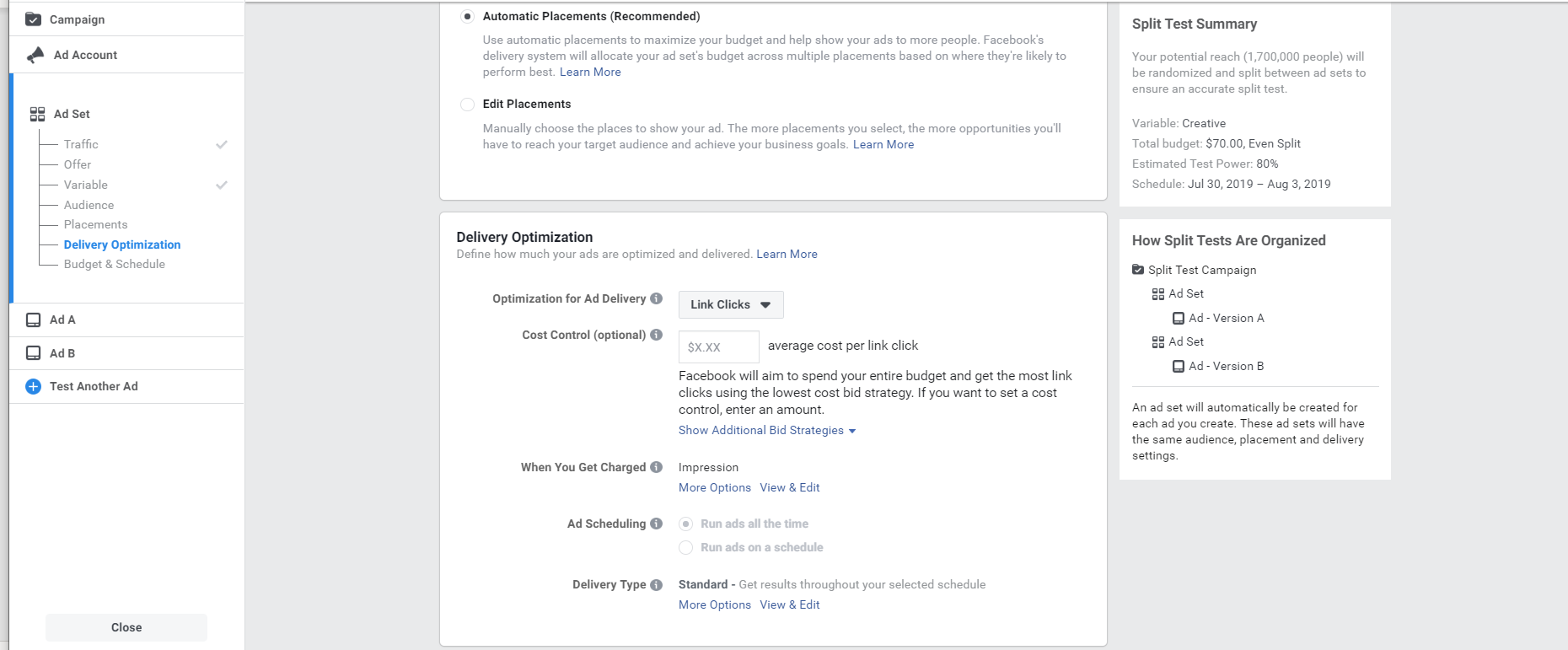
Split Test Budget & Schedule
This is where you can determine how much to spend, and the runtime of your ads. Here you have the choice of a daily budget vs. a lifetime budget. For example, if you decide to spend $70 a day for a 4-day campaign, your daily budget would be $70, and your lifetime budget would be $280.
If you choose daily budget, Facebook will spend up to that amount per day, regardless of performance on the account. Daily budgets don’t allow for ad scheduling since it’ll be working to spend that set amount.
Facebook is more budget and result-conscious with the lifetime budget option. Choosing lifetime budget means Facebook will alter daily spend levels in response to campaign results.
Don’t forget to keep an eye on the “Estimated Test Power”. This percentage is the likelihood of detecting a difference in your ad sets if there is one to detect. Facebook recommends you keep this test power at 80% or above for a worthwhile split test.
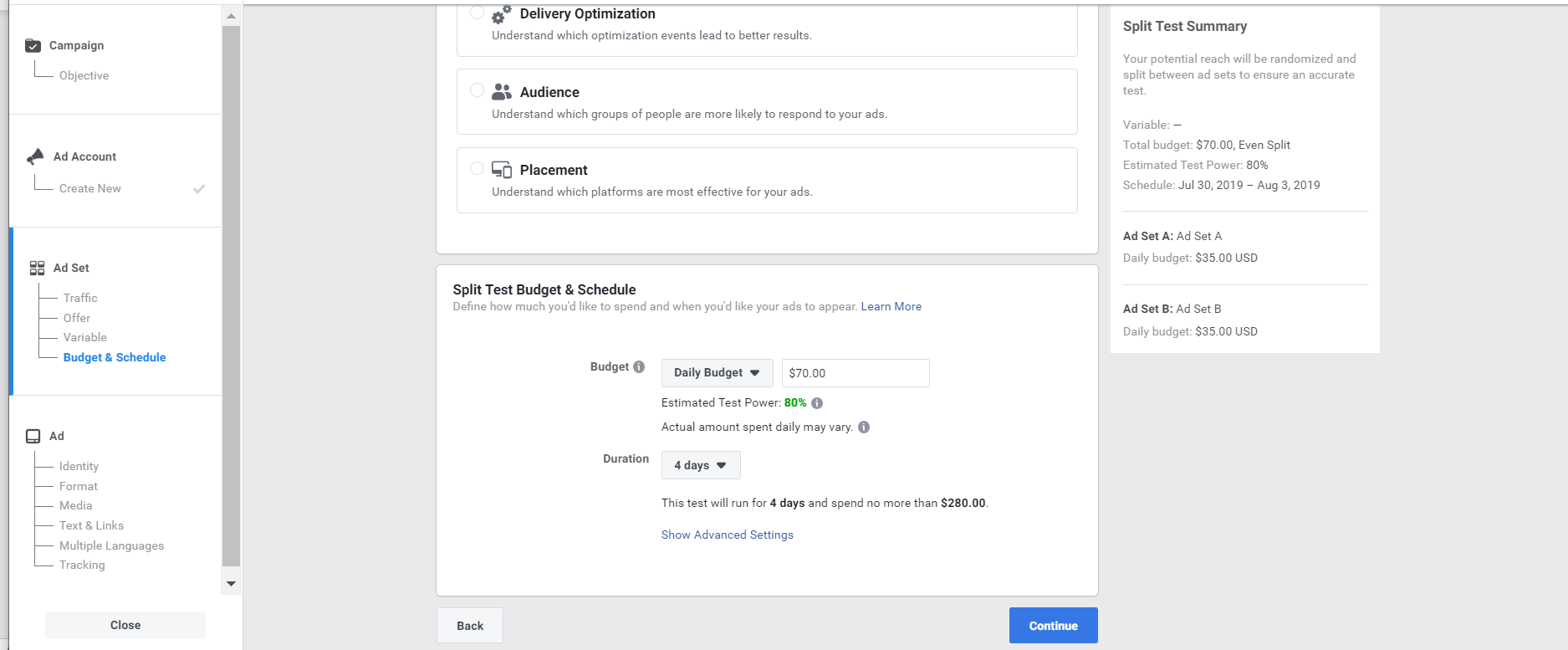
Once you’ve made your selections, you can click continue to upload and design your ad control.
Design Two Versions of your Ad
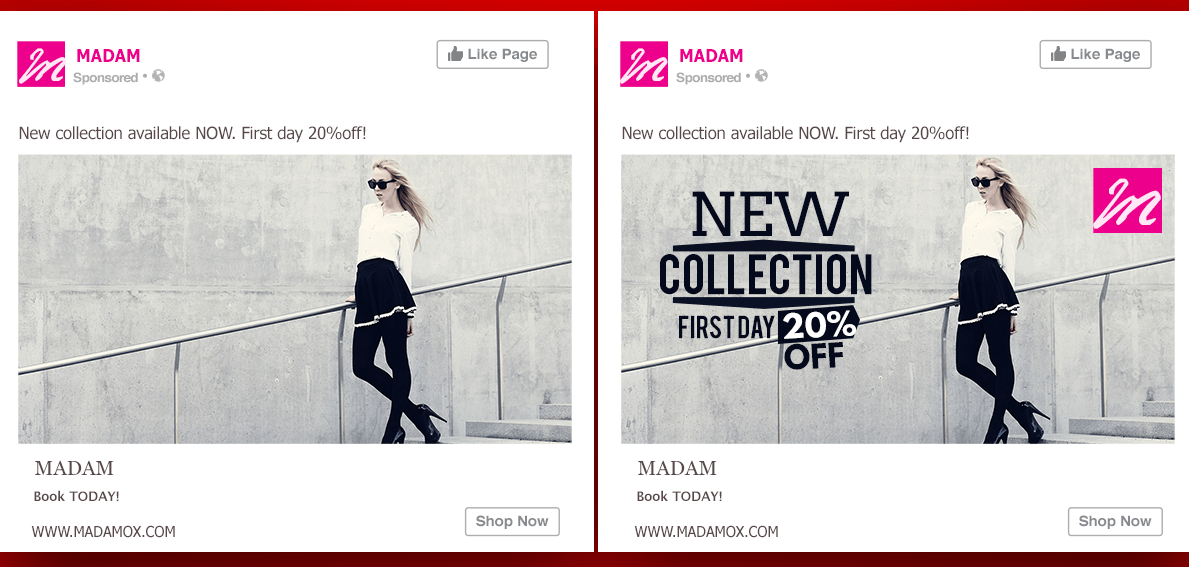
To split test, you’ll need to create one control (A), and one variable (B). Regardless of which variable you’re testing, it’s best only to change one so the results are clear. Some audience-facing variables you might switch could include changing your call-to-action, using a different image, or remove the image entirely.
Regardless of which you choose, be sure the final ad is noticeably different than before and is an aspect that’s broad enough to be applied in the future.
For example, if you’re marketing a winter holiday, don’t A/B test between two different photos of a decorative table setting. Choose a photo with a person, add text to the image, or remove the image entirely. That way if you’re advertising a summer holiday in the future, you’ll be able to paint a more generalized picture of what sparks interest in your audience.
Once you’re ready, input your ad into Facebook’s platform. Be sure to preview your ad (top right) and create URL parameters (bottom left) so you can track which engagement came from where.
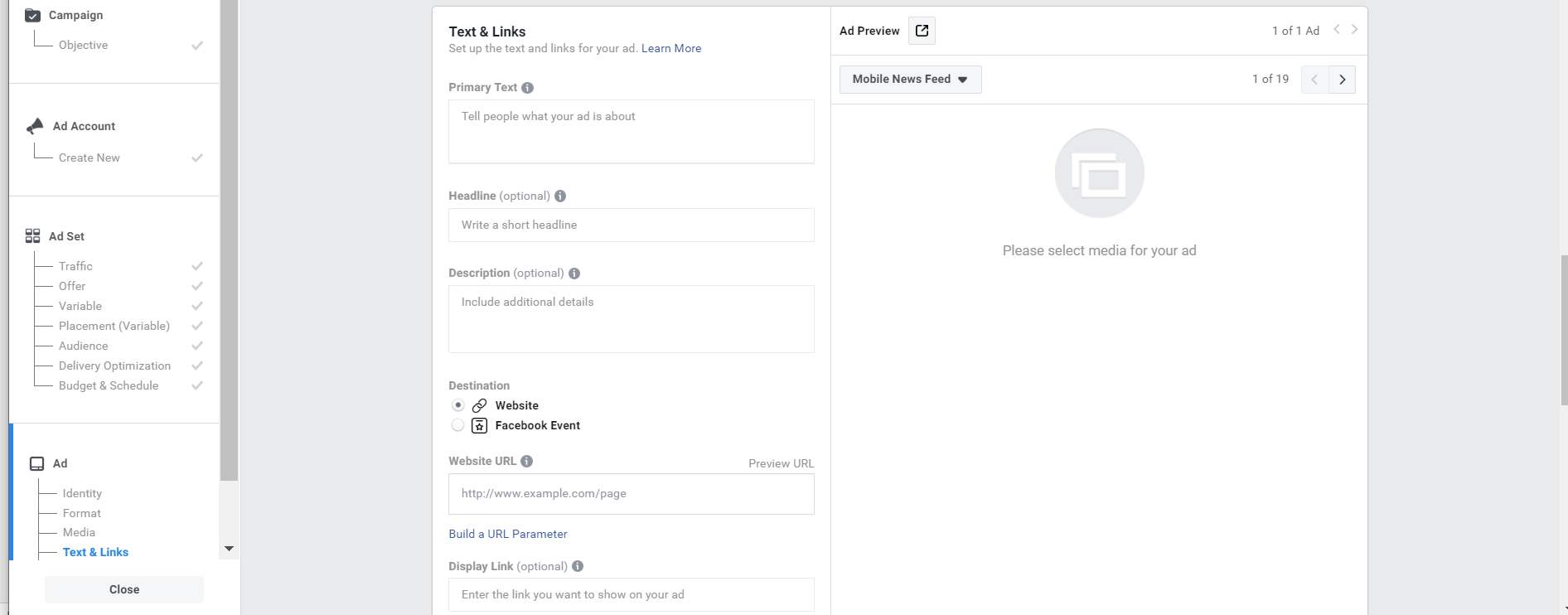
When you’re ready, click the “Continue to ad B” button in the bottom right corner. This page auto-fills with the same information as ad A. It’s here that you introduce any variables, such as changing the audience, ad format, or other specs.
Finally, you click the green “Confirm” button to finalize and purchase the ad.
Review the Results
Once your ads are finished running, it’s time to review the results of your A/B test. Drawing actionable conclusions is the most important step in increasing your ad’s CTR. Thankfully, Facebook Ads Manager makes this easy.
First, apply a filter so that only relevant campaigns and ad sets that were part of the split tests will show in the reporting table. To do this, click Filter and choose Split Test from the menu.
For a quick initial result, ads Manager puts a star next to the winning ad set. Facebook determines the winning set by comparing the cost per result of each ad set and other variables.
Facebook Ads Manager will also send you a detailed email report, that includes:
- Their Winning Ad Determination
- Your A/B Test Settings
- Results
- Cost
- Amount Spent
From these results, you can determine what worked and what changes you’d like to make for your next Facebook campaign.
—
Understanding Facebook advertising and split test marketing is a worthwhile investment for any marketer worth their salt. 80% of all internet users have a Facebook Account, meaning that you’re practically guaranteed to reach your target audience on the platform.
Using their Ads Manager, you can build a robust and ever-improving marketing strategy using their analytics. Over time, you’ll see an increase in revenue, sales, and lead generation. Once you have everything prepared, it only takes minutes to set up a Facebook Ad, so get started today!







